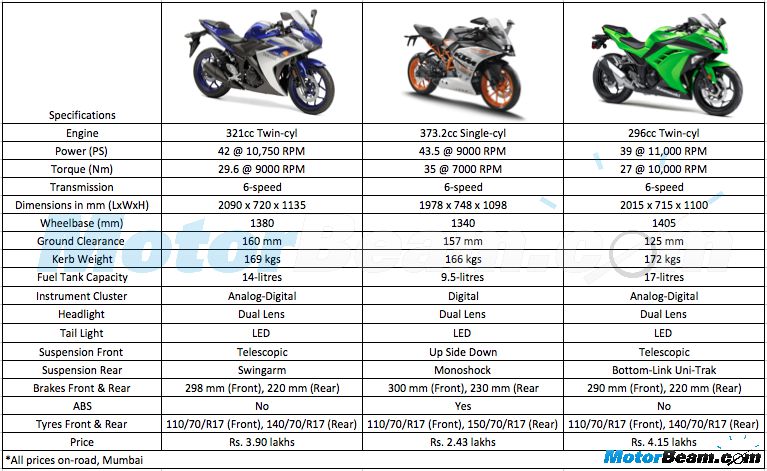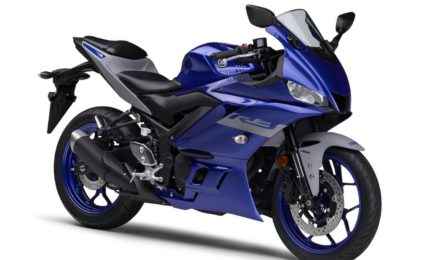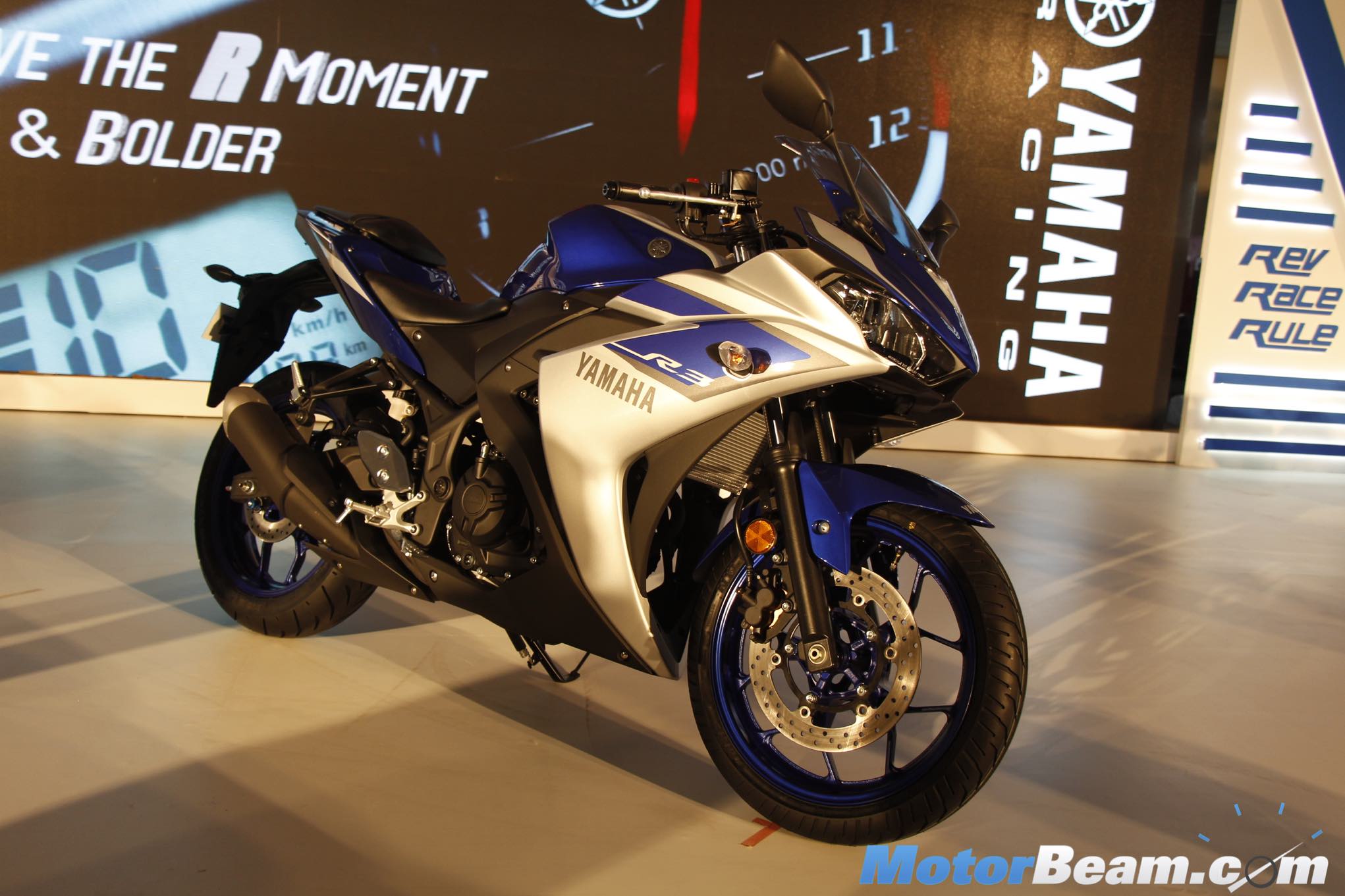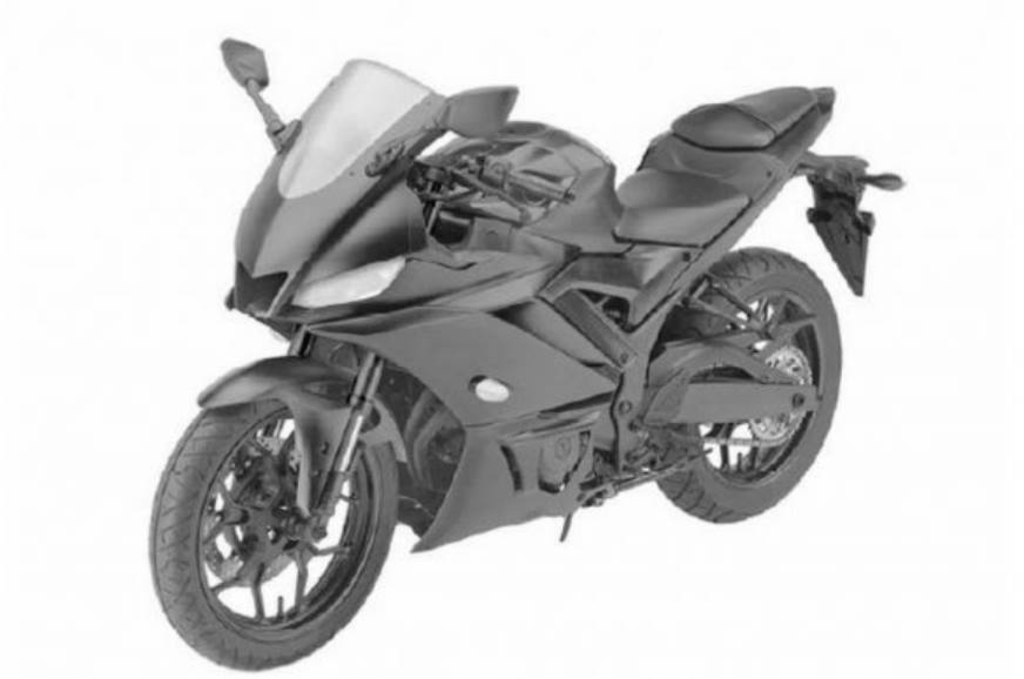The Yamaha R3 offers impressive amount of power, sharp styling but misses out by skimping on important features like ABS and slipper clutch, the latter being present on both its rivals.
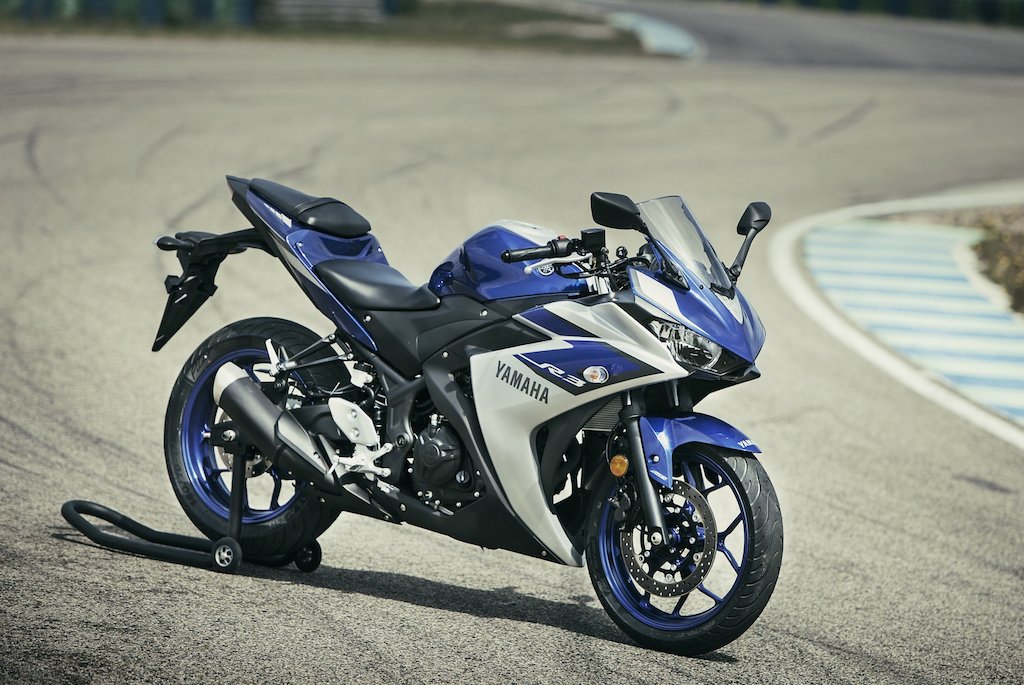
The R3 is finally here and Yamaha has launched its highly awaited offering at a price of Rs. 3.25 lakhs (ex-showroom, Delhi). The rival to the very capable Kawasaki Ninja 300 and the absolutely bonkers KTM RC 390, the R3 is here to make its presence felt in the lucrative quarter-litre space that is showing potential for growth. While Kawasaki has been one of the oldest entrants in the segment, it is the pricing that works as a major negator for the success of the Ninja 300, whereas the RC 390 rakes in maximum sales with its extremely value for money pricing and overwhelming power-to-weight ratio. So where does the R3 fit in this puzzle? We do a quick spec comparison to find out just that.
Design – The newest of all, the Yamaha R3 doesn’t exactly emerge as a completely new design as one would hope but blends into the competition very well. That said, the R3 looks agile, sharp and boasts of a design language inspired from the M1 and the R1 that definitely makes it stunning to look at. Up next is the KTM RC 390 that just refuses to grow up. Easily the most radically designed bike here, the RC offers lots of attention and appeal and has no inhibitions in showing off its Trellis frame, looking every bit ready for the track.
The cast alloy swingarm on the Austrian distinguishes it from the competition, adding torsional stiffness to the bike. The Kawasaki Ninja 300 isn’t as old as you might think and is handsome from every angle. Taking cues from the ZX-10R, the Ninja looks like a Japanese samurai and does not disappoint on any ground. All three bikes sport dual headlamps and get an aggressive riding position, most sporty being the RC 390.
Dimensions – In terms of dimensions, the Yamaha R3 is the largest bike here being longer and taller than the competition and will definitely boast of an enhanced road presence. The Ninja 300 comes close enough with a minuscule difference between the two. That said, the Kwacker gets the largest wheelbase at 1405 mm when compared to the 1380 mm wheelbase of the R3. The KTM RC 390 by all means is the smallest in size here, also making it the most agile on track and sports a wheelbase of 1340 mm.
Comfort – The KTM RC 390 is an out and out track focused bike and the Austrians have made no claims about it being otherwise. The riding position is extremely sporty and the seat is designed more for agility over comfort. The Ninja 300 gets a more relaxed riding position. It is sporty yet not aggressive and makes for an excellent touring machine. The Ninja also accommodates the pillion with relative ease. Coming to the new R3, the bike despite boasting of track credentials can still make for a good tourer. The riding position like the Ninja is dedicated but not submissive, which makes for enhanced riding comfort. The Ninja gets the largest fuel tank capacity at 17-litres, followed by the R3 at 14-litres while the RC 390 gets the smallest tank of 9.5-litres.
Powertrain – Both the Yamaha R3 and Kawasaki Ninja 300 are twin-cylinder offerings that make for a higher rev limit, while the KTM RC 390 uses a singe-cylinder unit. The RC makes the highest power output of 43.5 PS and also gets the highest torque of 35 Nm kicking in early at 7000 RPM. The R3 coming in second with 42 PS and 29.5 Nm of torque, while the Ninja is the lowest with 39 PS and 27 Nm. The RC 390’s smaller dimensions make it the lightest bike in this comparison with a kerb weight of 166 kgs and boasts of a power-to-weight ratio of 262 PS/tonne. The R3 takes the middle ground with a kerb weight of 169 kgs and a figure of 248 PS/tonne, whereas the Ninja 300 is the heaviest with a kerb weight of 172 kgs and the lowest figure of 227 PS/tonne.
Verdict – Yamaha India has very calculatingly positioned the R3 in the Indian market. While it isn’t priced as aggressively as the KTM RC 390 due to its CKD entry in the country, the Japanese automaker has effectively undercut the Kawasaki Ninja 300 in the segment and manages to curb the on-road price within the confines of the Rs. 4 lakh mark. Boasting of drool-worthy power figures, Yamaha race heritage and an aggressive design language, the R1 maker just might pull it off with its new premium sports bike.
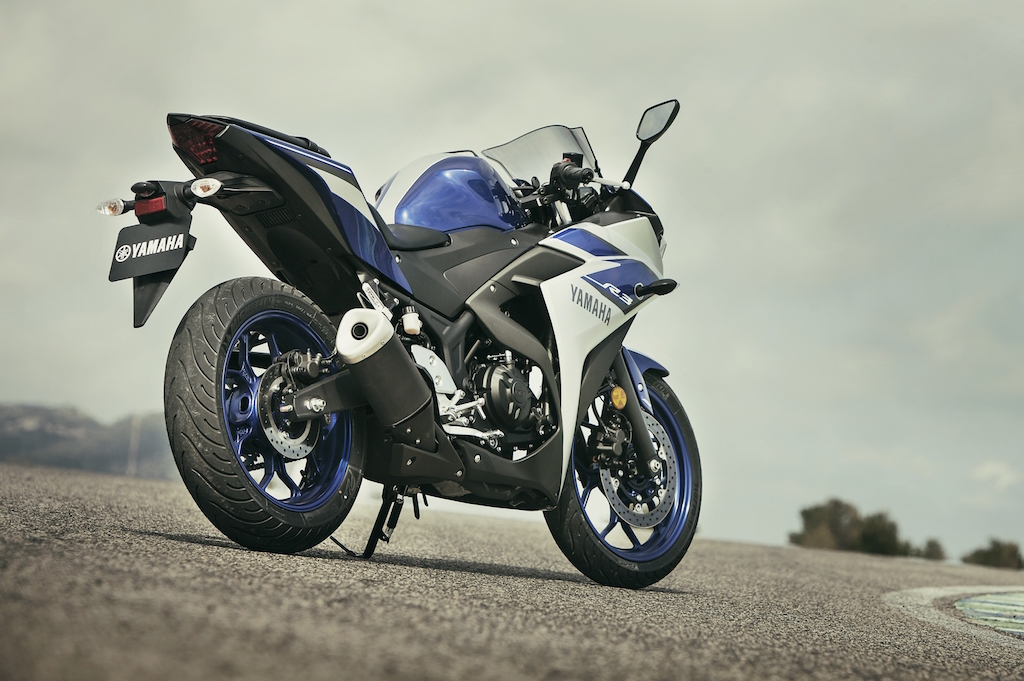
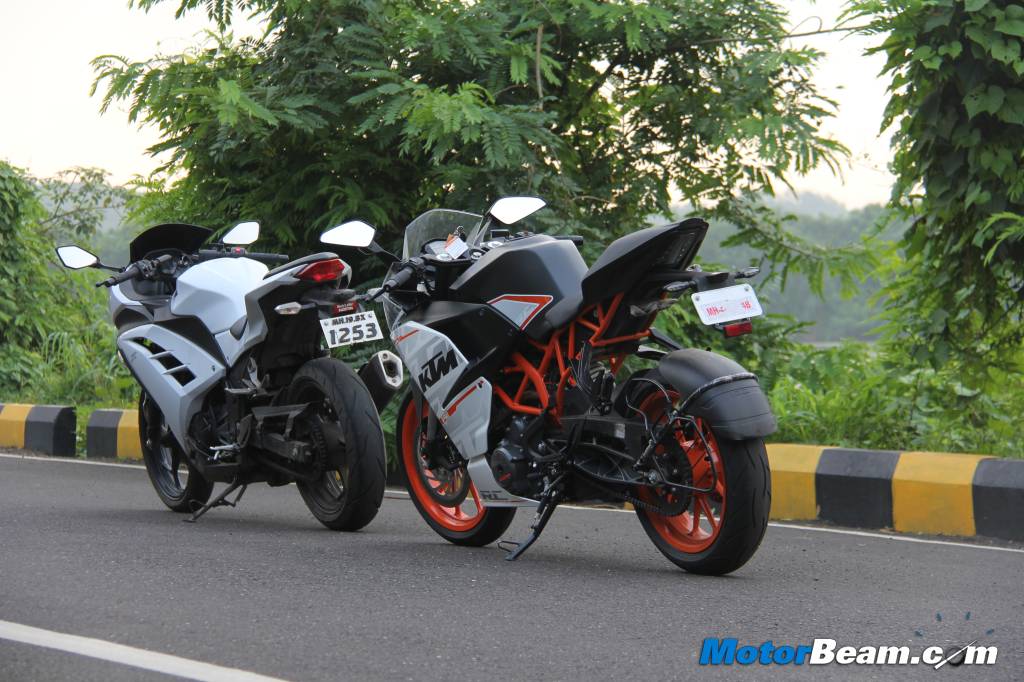
Both the R3 and Ninja 300 do not get ABS in India, keeping the VFM quotient way higher on the RC 390


